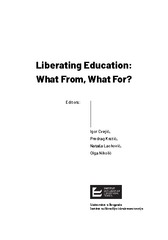Social Turn and Operative Realism: Two Emancipatory Methods of Contemporary Art Practices
Поглавље у монографији (Објављена верзија)
Метаподаци
Приказ свих података о документуАпстракт
The paper is a result of the research that focuses on two occurrences in contemporary art – the social turn, described by Claire Bishop and operative realism, defined by Nicolas Bourriaud. As the research puts a special focus on educational and emancipatory aspects of contemporary art, it depicts, as study cases, two recent installations by contemporary female artists Teresa Margolles and Vahida Ramujkić, where the author notices the presence of both the social turn and operative realism. In the introductory part of the paper, the author defines the applied research methodology and gives more information about the artistic practices of the selected two artists. The next chapter presents educational aspects of contemporary art practices and arts-based research, following the arguments and studies by William Condee, Graeme Sullivan, Danielle Boutet, Beatriz da Costa, Kavita Philip and others. In the central part of the paper, the author gives a descriptive analysis of the two selected in...stallations, emphasising their relational, emancipatory, and educational aspects, and further concluding that the social turn and operative realism are educational and emancipatory precisely because they initiate dialogue, association, empathy and connection between different communities and individuals.
Кључне речи:
social turn / operative realism / contemporary art / education / emancipation / Claire Bishop / Nicolas BourriaudИзвор:
Liberating Education: What From, What For?, 2021Издавач:
- Beograd : Institut za filozofiju i društvenu teoriju
Финансирање / пројекти:
- Министарство науке, технолошког развоја и иновација Републике Србије, институционално финансирање - 200025 (Универзитет у Београду, Институт за филозофију и друштвену теорију) (RS-MESTD-inst-2020-200025)
Колекције
Институција/група
IFDTTY - CHAP AU - Jankov, Sonja PY - 2021 UR - http://rifdt.instifdt.bg.ac.rs/123456789/2520 AB - The paper is a result of the research that focuses on two occurrences in contemporary art – the social turn, described by Claire Bishop and operative realism, defined by Nicolas Bourriaud. As the research puts a special focus on educational and emancipatory aspects of contemporary art, it depicts, as study cases, two recent installations by contemporary female artists Teresa Margolles and Vahida Ramujkić, where the author notices the presence of both the social turn and operative realism. In the introductory part of the paper, the author defines the applied research methodology and gives more information about the artistic practices of the selected two artists. The next chapter presents educational aspects of contemporary art practices and arts-based research, following the arguments and studies by William Condee, Graeme Sullivan, Danielle Boutet, Beatriz da Costa, Kavita Philip and others. In the central part of the paper, the author gives a descriptive analysis of the two selected installations, emphasising their relational, emancipatory, and educational aspects, and further concluding that the social turn and operative realism are educational and emancipatory precisely because they initiate dialogue, association, empathy and connection between different communities and individuals. PB - Beograd : Institut za filozofiju i društvenu teoriju T2 - Liberating Education: What From, What For? T1 - Social Turn and Operative Realism: Two Emancipatory Methods of Contemporary Art Practices UR - https://hdl.handle.net/21.15107/rcub_rifdt_2520 ER -
@inbook{
author = "Jankov, Sonja",
year = "2021",
abstract = "The paper is a result of the research that focuses on two occurrences in contemporary art – the social turn, described by Claire Bishop and operative realism, defined by Nicolas Bourriaud. As the research puts a special focus on educational and emancipatory aspects of contemporary art, it depicts, as study cases, two recent installations by contemporary female artists Teresa Margolles and Vahida Ramujkić, where the author notices the presence of both the social turn and operative realism. In the introductory part of the paper, the author defines the applied research methodology and gives more information about the artistic practices of the selected two artists. The next chapter presents educational aspects of contemporary art practices and arts-based research, following the arguments and studies by William Condee, Graeme Sullivan, Danielle Boutet, Beatriz da Costa, Kavita Philip and others. In the central part of the paper, the author gives a descriptive analysis of the two selected installations, emphasising their relational, emancipatory, and educational aspects, and further concluding that the social turn and operative realism are educational and emancipatory precisely because they initiate dialogue, association, empathy and connection between different communities and individuals.",
publisher = "Beograd : Institut za filozofiju i društvenu teoriju",
journal = "Liberating Education: What From, What For?",
booktitle = "Social Turn and Operative Realism: Two Emancipatory Methods of Contemporary Art Practices",
url = "https://hdl.handle.net/21.15107/rcub_rifdt_2520"
}
Jankov, S.. (2021). Social Turn and Operative Realism: Two Emancipatory Methods of Contemporary Art Practices. in Liberating Education: What From, What For? Beograd : Institut za filozofiju i društvenu teoriju.. https://hdl.handle.net/21.15107/rcub_rifdt_2520
Jankov S. Social Turn and Operative Realism: Two Emancipatory Methods of Contemporary Art Practices. in Liberating Education: What From, What For?. 2021;. https://hdl.handle.net/21.15107/rcub_rifdt_2520 .
Jankov, Sonja, "Social Turn and Operative Realism: Two Emancipatory Methods of Contemporary Art Practices" in Liberating Education: What From, What For? (2021), https://hdl.handle.net/21.15107/rcub_rifdt_2520 .



